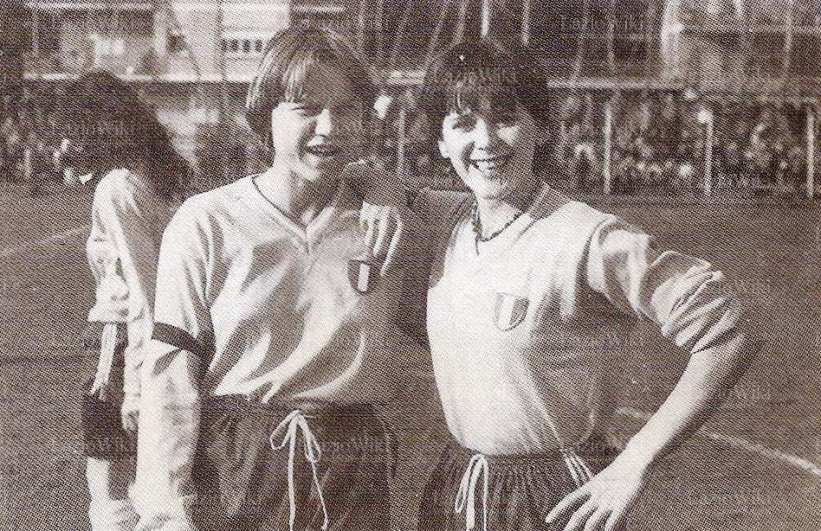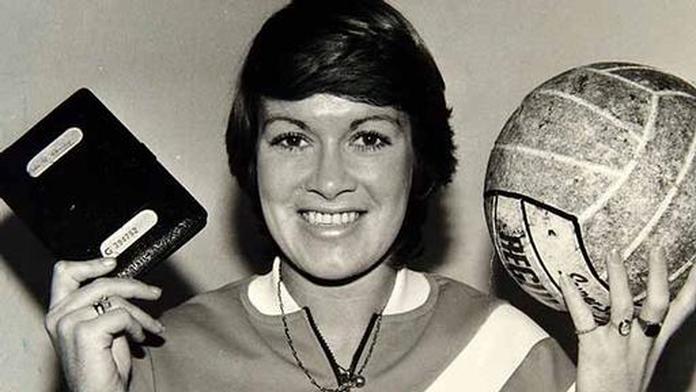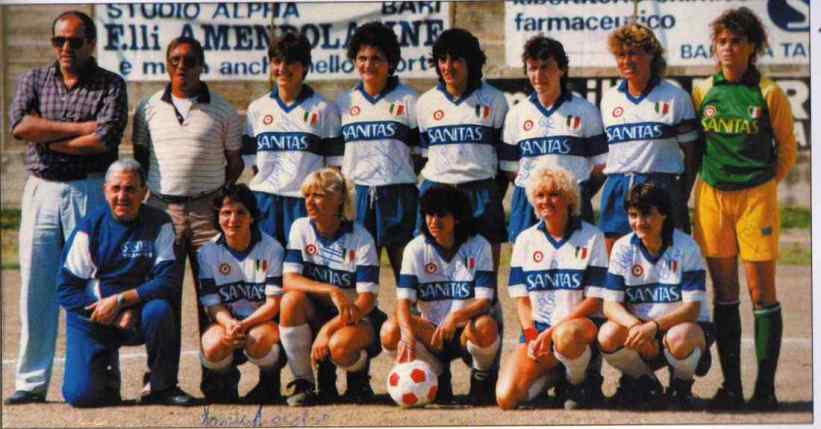“My aunt has won a World Cup final for Italy.”
This can be quite the conversation starter, especially if you’re Scottish!
There aren’t too many footballers from our small nation who have made it big on the Peninsula – but the success of Rose Reilly more than makes up for any shortage.
A number of trophies and framed pictures – usually of Rose being held aloft by jubilant teammates on balmy Italian evenings – in my gran’s living room, are the first recollections I have of my aunt’s football career. Little did I know at the age of five just how successful a career this had been; the presents my two brothers and I received from Italy – most notably three full Napoli kits with Diego Maradona’s iconic Number 10 on the back – were the top priority for three football-mad youngsters at this stage.
Growing up in the small Ayrshire town of Stewarton, Rose had also been a football-mad youngster. Football opportunities for girls being restricted, she played for Stewarton United Boys Club, and her natural ability quickly caught the eye. Her football skills were matched by success on the track and, by her mid-teens, Rose had played for the Scotland women’s football team and been selected for Scotland’s Commonwealth Games squad.
However, football won the day over athletics, and, at the age of 17, Rose decided that she would have to move abroad if she were to have any chance of realising her dream of becoming a professional footballer.
Although she began in France in 1972, winning a league title with Reims, it was in Italy that Rose’s career really kicked-off. She played for AC Milan – where she won her first two Italian league titles between 1973 and 1977 – before going on to have successful spells with Catania, Lecce, Napoli, Fiorentina and Trani women’s teams.
Rose Reilly, second from the right on the back row, pictured for ACF Trani
The women’s game in Italy was attracting bigger crowds than many Scottish top flight teams can boast today, and Rose was the star of the show. A dual passport allowed her to play for the Italian women’s national team, and in 1983, at the peak of her career, Rose captained her adopted nation to World Cup success. (Although the tournament wasn’t officially endorsed by FIFA at this stage, it was still recognised as the pinnacle of the women’s game). She even scored one of the goals as the Azzurri defeated the USA 3-1 in front of 90,000 fans at China’s National Stadium.
In addition to World Cup success, Rose won eight Serie A titles, four Italian Cups and was twice Serie A Golden Boot winner, as well as being voted the world’s best female footballer. Not a bad record for a girl from Stewarton.
Rose is the only female in the Scottish Football Hall of Fame, and a portrait of her hangs in the Scottish Football Museum in Hampden. Indeed, her love for her homeland never diminished throughout her time playing on the peninsula, and she once said there was ‘a Scottish heart beating’ under her Italian jersey. There’s no doubt that her football abilities combined the best qualities of both nations, and she remains a legendary figure for the women’s game. In fact, her achievements recall those of Ireland’s Anne O’Brien – another iconic figure in the women’s game who played with Rose at Reims, and also went on to forge a highly successful career in Italy with the likes of Lazio, Reggiana and Milano 82.

Click the image to read about Anne O’ Brien (right): The Unknown Legend of Calcio
Following the end of a remarkable career, Rose continued to live in Italy for a number of years, which meant more 1990s Italian football kits making their way over to three football-mad boys in Scotland. Inter and Sampdoria jerseys were added to my own collection, while the Gianluca Pagliuca top and Valsport gloves my eldest brother received were the envy of our home town’s goalkeepers’. An Italia 90 Adidas match ball also graced our back garden, which was swallowed up by the giant hedge behind our goalposts, never to be seen again.
But in truth, as beautiful as these iconic items of memorabilia were, they paled in comparison to the pioneering exploits of Rose Reilly; one of Calcio’s most successful foreign imports and a rare Scottish World Cup winner, albeit in the colours of the Azzurri.


